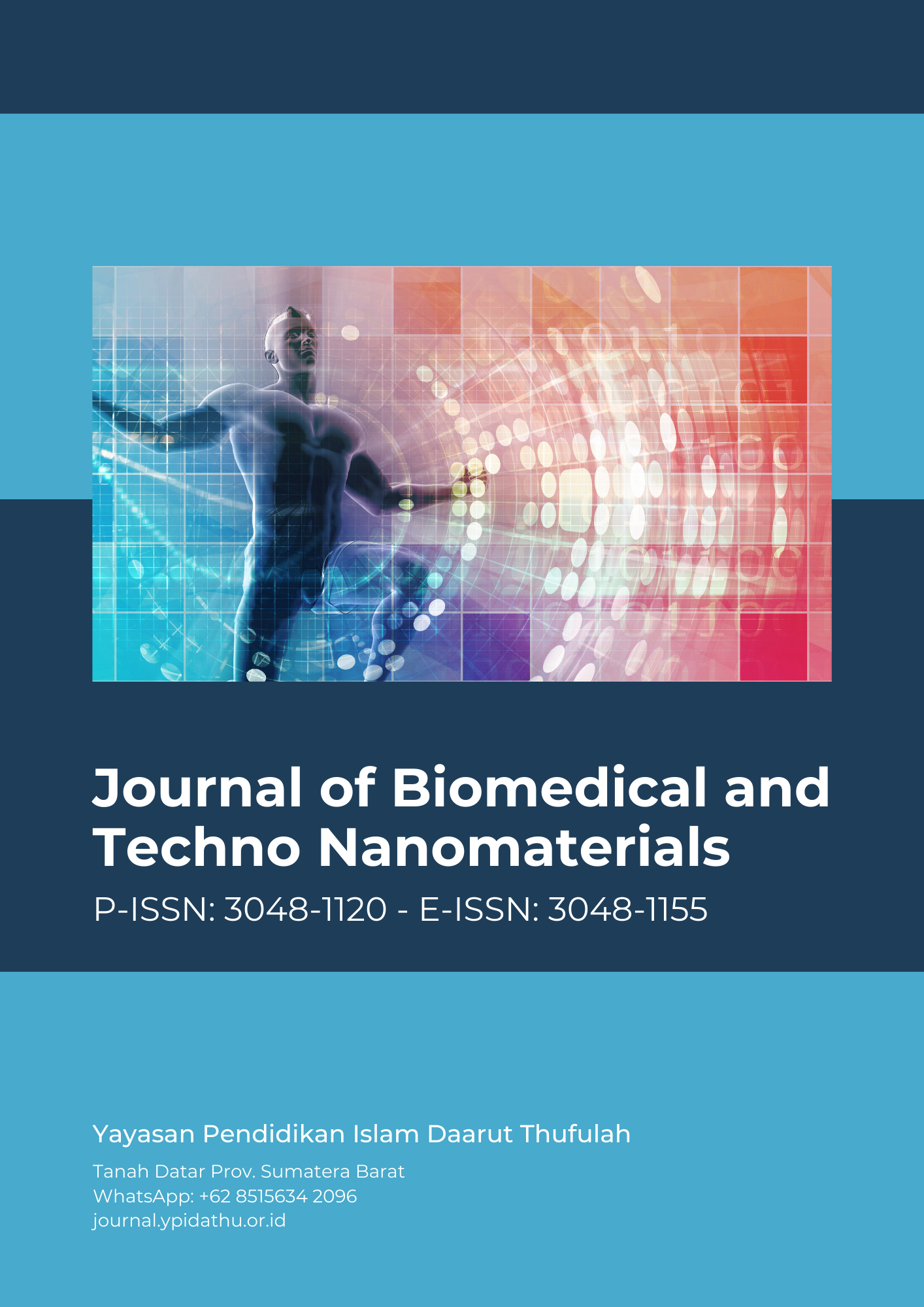Abstract
Diabetes is a global health challenge affecting millions worldwide. Traditional diabetes management approaches, while effective, often face limitations in terms of precision, efficacy, and patient compliance. Recent advancements in nanomedicine offer promising solutions to these challenges by enabling targeted drug delivery, enhanced monitoring, and improved therapeutic outcomes. This study aims to explore the latest innovations in nanomedicine for diabetes management and evaluate their effectiveness through cross-continental research. The aim is to identify critical advancements, compare their efficacy across different populations, and provide insights into their potential global impact. A comprehensive literature review and meta-analysis covered research studies from North America, Europe, and Asia. Data were collected on various nanomedicine-based interventions, including nanoparticle drug delivery systems, nano biosensors, and nanotherapeutics. The effectiveness of these innovations was assessed based on parameters such as blood glucose control, complication reduction, patient adherence, and overall health outcomes. The analysis revealed that nanomedicine-based interventions significantly improve diabetes management across all studied populations. Nanoparticle drug delivery systems demonstrated enhanced bioavailability and sustained insulin release, improving blood glucose control. Nanobiosensors provided high accuracy in real-time monitoring of glucose levels, improving patient adherence to treatment regimens. Nanotherapeutics showed potential in reducing diabetes-related complications, such as neuropathy and retinopathy, through targeted action and minimal side effects. Innovations in nanomedicine present a transformative approach to diabetes management, offering improved efficacy, precision, and patient compliance. The cross-continental research highlights the universal benefits of these advancements despite regional differences in healthcare infrastructure and patient demographics. Further research and collaboration are recommended to optimize these technologies for broader clinical applications and address remaining implementation challenges.
Full text article
References
Arrangoiz, R. (2016). Melanoma Review: Epidemiology, Risk Factors, Diagnosis and Staging. Journal of Cancer Treatment and Research, 4(1), 1. https://doi.org/10.11648/j.jctr.20160401.11
Chandra, R. (2020). Gambaran Klinis dan Patologi Melanoma Maligna Kutaneus. Cermin Dunia Kedokteran, 47(11), 673. https://doi.org/10.55175/cdk.v47i11.1193
Houghton, A. N., Coit, D. G., Daud, A., Dilawari, R. A., DiMaio, D., Gollob, J. A., Haas, N. B., Halpern, A., Johnson, T. M., Kashani-Sabet, M., Kraybill, W. G., Lange, J. R., Martini, M., Ross, M. I., Samlowski, W. E., Sener, S. F., Tanabe, K. K., Thompson, J. A., Trisal, V., … Walker, M. J. (2006). Melanoma: Clinical practice guidelines in oncologyTM. JNCCN Journal of the National Comprehensive Cancer Network, 4(7), 666–684. https://doi.org/10.6004/jnccn.2006.0057
Just a moment... (n.d.). Retrieved May 12, 2024, from https://www.thelancet.com/journals/lancet/article/piiS0140-6736(13)60802-8/fulltext
Kachroo, S., & Gowder, S. J. T. (2016). Gene therapy: An overview. Gene Technology, 5(1), 1–14.
Little, J. W. (2006). Melanoma: Etiology, treatment, and dental implications. General Dentistry, 54(1), 61–66; quiz, 67.
Lnterferon?? gene therapy for cancer: Basic research to clinical application—Yoshida—2004—Cancer Science—Wiley Online Library. (n.d.). Retrieved May 12, 2024, from https://onlinelibrary.wiley.com/doi/abs/10.1111/j.1349-7006.2004.tb02194.x
McCourt, C., Dolan, O., & Gormley, G. (2014). Malignant Melanoma: A Pictorial Review. The Ulster Medical Journal, 83(2), 103–110.
Wargasetia, T. L. (2005). Terapi Gen pada Penyakit Kanker. 4(2).
Widyastuti, D. A. (2017). TERAPI GEN: DARI BIOTEKNOLOGI UNTUK KESEHATAN. Al-Kauniyah: Jurnal Biologi, 10(1), 59–72. https://doi.org/10.15408/kauniyah.v10i1.4864
Yu, M. (1996a). Advances in Cancer Gene Therapy. McGill Journal of Medicine, 2(2), Article 2. https://doi.org/10.26443/mjm.v2i2.702
(Malignant Melanoma: Skin Cancer?Diagnosis, Prevention, and Treatment - Critical ReviewsTM in Eukaryotic Gene Expression, Volume 30, 2020, Issue 4 - Begell House Digital Library, n.d.)
Lerner, B. A., Stewart, L. A., Horowitz, D. P., & Carvajal, R. D. (2017). Mucosal Melanoma: new insights and therapeutic options for a unique and aggressive disease. Oncology (08909091), 31(11).
Eyquem, J., Mansilla-Soto, J., Giavridis, T., Van Der Stegen, S. J. C., Hamieh, M., Cunanan, K. M., Odak, A., Gönen, M., & Sadelain, M. (2017). Targeting a CAR to the TRAC locus with CRISPR/Cas9 enhances tumour rejection. Nature, 543(7643), 113–117. https://doi.org/10.1038/nature21405
Gloria, M. (2023, Juli 20). Customizing CAR-T cell-based applications using the CRISPR-Cas9 system | IDT. Integrated DNA Technologies. https://sg.idtdna.com/pages/education/decoded/article/customizing-car-t-cells-using-the-crispr-cas9-system
Parambi, D. G. T., Alharbi, K. S., Kumar, R., Harilal, S., Batiha, G. E.-S., Cruz-Martins, N., Magdy, O., Musa, A., Panda, D. S., & Mathew, B. (2022). Gene Therapy Approach with an Emphasis on Growth Factors: Theoretical and Clinical Outcomes in Neurodegenerative Diseases. Molecular Neurobiology, 59(1), 191–233. https://doi.org/10.1007/s12035-021-02555-y
Ramsden, D. A., & Nussenzweig, A. (2021). Mechanisms driving chromosomal translocations: Lost in time and space. Oncogene, 40(25), 4263–4270. https://doi.org/10.1038/s41388-021-01856-9
Rupp, L. J., Schumann, K., Roybal, K. T., Gate, R. E., Ye, C. J., Lim, W. A., & Marson, A. (2017). CRISPR/Cas9-mediated PD-1 disruption enhances anti-tumor efficacy of human chimeric antigen receptor T cells. Scientific Reports, 7(1), 737. https://doi.org/10.1038/s41598-017-00462-8
Wargasetia, T. L. (2005). Terapi Gen pada Penyakit Kanker. 4(2).
Zhang, F., Wen, Y., & Guo, X. (2014). CRISPR/Cas9 for genome editing: Progress, implications and challenges. Human Molecular Genetics, 23(R1), R40-46. https://doi.org/10.1093/hmg/ddu125
Authors
Copyright (c) 2024 Hullavarad Joan, Emily Braley, Zheng Denise

This work is licensed under a Creative Commons Attribution-ShareAlike 4.0 International License.

